2014 is the final year for the “Luca Brasi” version of the Chrysler 300 sedan. Next year – this fall, actually – Chrysler will debut a redesigned 300 that will be (if spy photos are accurate) curvy and slinky rather than barrel chested and beefy. It looks like the RWD-based architecture will carry over – along with (available) V-8 power.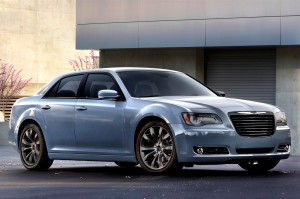
But, you never know.
Nor for how long.
V-8s are becoming a hard sell. Or rather, hard to offer for sale – because of federal Corporate Average Fuel Economy (CAFE) standards that punish any car company that dares to sell a car that rates less than “x” MPG. The minimum acceptable figure is about to ascend to 35.5 MPG average. That’s hard to reach with a V6 – let alone a Hemi V8. There is also the reality of $3.50 per gallon gas – and an economy as shaky as a Jenga tower. I would not be at all surprised to find, come Fall, that the 2015 300 is smaller and lighter – and very possibly, powered by a smaller V-6.
With the V-8 limited to low-production/specialty models such as the SRT-8.
So, gather ye rosebuds while ye may.
There is also this to consider: Even if the 2015 300 retains the RWD architecture and mass-market V-8, it’s gonna be “new” and presumably popular, which means . . . more expensive than the current 300. As is almost always the case, you will probably be able to negotiate a better deal on one of the last of the current 300s as dealers try to clear out inventory than you can expect to haggle down the price of an “all new” 300.
There’s also this: The next 300 might suck. In which case, you’ll kick yourself for not having bought one of these before they’re gone . . .
WHAT IT IS
The 300 is a large, RWD-based luxury-sport sedan available with V-8 power that doesn’t – necessarily – cost luxury-sport sedan money.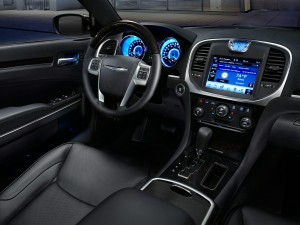
The base model 300 with 3.6 liter V-6 and RWD starts at $30,895 – about $7k less than its closest in kind (RWD-based, V-8 available) competitor, the $38,000-to-start Hyundai Genesis.
The 300’s entry price is also in the same ballpark as the FWD (and V-6 only) Toyota Avalon ($31,340 to start) and the also FWD-only Chevy Impala (when that one’s ordered with a V-6; base price $30,085).
With AWD – a feature not offered in the Avalon or the Impala – the 300’s price climbs to $33,395.
A top-of-the-line 300C with the 5.7 Hemi, AWD and the John Varvatos ultra-luxury package stickers for $47,675.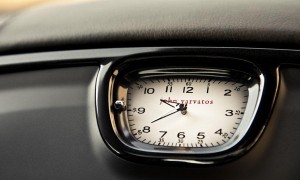
The Hyundai Genesis is also available with a V-8, but does not offer all-wheel-drive with the V-8 (it’s only sold with the V-6). Its base price of $51,500 is also much higher than the Hemi-equipped, AWD and John Varvatos-laden 300.
WHAT’S NEW
Entering its final year, the current generation 300 sees virtually no changes.
The big thing to know – other than the pending model changeover – is that none of the current 300s comes standard with V-8 power. Not even the C – which is no longer the Hemi C – unless you order (and pay extra for) the 5.7 liter Hemi V-8.
All trims get the 3.6 liter V-6 as their standard powerplant, with the Hemi available as optional equipment in all but the base trim.
You can still order AWD in all trims, however.
An American car – the way they used to build ’em. Powerful engines, powerful styling. Live large!
Available with AWD and V-8 power. Features that have all-but-vanished from the ranks of affordable cars.
Much roomier backseat than Hyundai Genesis – which also costs a lot more than the 300.
WHAT’S NOT SO GOOD
Chevy Impala has much more front seat legroom (45.8 inches vs. 41.8) and about the same back seat legroom; costs less and – when ordered with its available four cylinder engine – gets much better gas mileage than the 300.
Hemi V-8 is paired with dated five-speed automatic. (Expect the 2015 300 to use the eight speed auto now paired only with the V-6 with both the 300’s engines).
It’ll be old news a couple of months from now.
Standard equipment in all trims is Chrysler’s 3.6 liter “Pentastar” V-6.
In the base trim 300, this engine delivers 292 hp; in the next-up S trim – which is fitted with a less restrictive exhaust system – the rated output climbs to 300 hp. The engine is paired with an eight-speed automatic and your choice (in all trims, including the base trim) of RWD or (optionally) AWD.
This combo delivers 0-60 in about 6.8 seconds (RWD) and 19 MPG city, 31 highway.
Both the V-6 equipped Chevy Impala and the V-6 Toyota Avalon are about as quick (6.7 seconds and 6.5 seconds, respectively) and their EPA figures (18 city, 28 highway for the Chevy; 21 city, 31 highway for the Toyota) are virtually the same.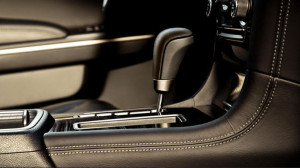
Neither, however, offers an engine upgrade – or all-wheel-drive.
The 300’s closest rival that does offer an upgrade under the hood – as well as all-wheel-drive – is the Hyundai Genesis sedan. Its standard 3.8 liter V-6 is stronger – 311 hp – and the car itself is quicker (6.4 seconds to 60). Gas mileage is about the same as the 300’s: 18 city, 29 highway – and like the Chrysler, you can order the Hyundai with AWD.
If you stick with the V-6, that is.
While the Genesis is available with a 420 hp 5.0 liter V-8 that can go toe-to-toe with the 300’s optional 5.7 liter, 363 hp Hemi engine, Hyundai only sells the V-8 with RWD. Chrysler offers the Hemi with – and without – AWD.
Nothing else you can buy in the under $40k range offers this two-fer.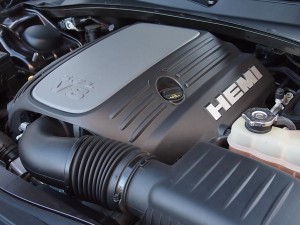
And: The Hemi/AWD-equipped 300 is just as quick (and costs much less) than the V-8 (and RWD-only) Genesis. Both cars get to 60 in about 5.3 seconds.
This seems a little odd, because the Genesis’ V-8 is stronger . . . on paper. The Hyundai is also a slightly smaller – and lighter – car. At 3,824 lbs., it weighs 205 lbs. less than the 300. So how come it’s not quicker? Seems like it ought to be.
The explanation probably has to do with cubic inches – and torque. The 300’s Hemi – at 5.7 liters – is nearly 1 liter larger than the 5.0 V-8 in the Genesis R Spec. Being larger, it makes more torque – 391 ft.-lbs. vs. 376 ft.-lbs for the Genesis. And that higher peak torque output is reached sooner: 4,200 RPM vs. 5,000 RPM for the Hyundai. The higher – and sooner – torque output gives the 300 an advantage coming off the line – as well as stronger mid-range/part-throttle responsiveness. 
The only downside is the rapidity of the gas gauge needle’s descent from Full to Empty. The Hemi is hungry: 16 city, 25 highway with RWD and 15 city, 23 highway if you order it with AWD. Use the Hemi’s full potential more than occasionally and your monthly gas bill may be more than your monthly car payment. The 300’s tank holds 19.1 gallons. And the Hemi sups on premium unleaded. At current (June, 2014) prices it costs about $70 to feed the Hemi. Once a week, times four is almost $300 a month . . . just for gas.
And once the Fed’s 35.5 MPG fuel efficiency fatwa goes into effect, there will be gas guzzler fines on top of this. That won’t affect buyers of this 300 – the fatwa goes into effect in 2016. But bet your bippie it will affect the new 300.
Gather ye rosebuds will ye may.
If you’re older than 40, you can probably remember when cars like the 300 were as common as Camrys are today. When RWD and V-8 power was typical, not exceptional. The comforting feel of two tons of slab-sided, full-framed, UAW steel . . . when 20 gallon fill-ups cost $20 bucks.
For all these reasons – except the cost of fuel today – the 300 is a pleasure to drive – especially if Hemi-equipped. It’s a dominating car with a not-small dash of mafia menace about it. A quality that old-school American rollers – think ’70 Chrysler Imperial – also had.
They were manly cars – and not ashamed of it.
I’ve driven several over the years and each time I get one, I notice the way other drivers defer to it. Rarely is it necessary to flash to pass. The car ahead usually just slides over, expressing the same intelligent deference I’d give an NFL lineman in a bar.
And if the car up ahead doesn’t want to give way? Then it’s time to rouse the Hemi. Yes, the V-6 is absolutely adequate – more than adequate. It’s a measure of how good we’ve got it – and don’t know it – that people will bitch about a mid-six to 60 timeslip and “only” 300 hp.
The base V-6 300 is quicker and faster than most V-8 muscle cars, back in the days of $20 fill-ups.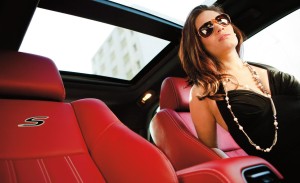
But as commendable as that V-6 is what makes the 300 special – what defines it more than anything else – is the eight cylinder silverback gorilla under that coffin-nosed front clip.
Muse with me.
Nearly twice the cubic inches in the Avalon or the Impala. More power – on paper and in fact – than the Super Commando 440 Magnum big block in my high school buddy Stu Monster’s ’71 Plymouth GTX. But tucked discretely in perfectly pleatedJohn Varvatos dinner clothes – or the sheetmetal equivalent – rather than the dirty wife-beater T that was my buddy Stu’s GTX.
The 300 is a great American car. Maybe the last of its kind.
Chrysler toned down the Goodfellas meme somewhat when the 300 was refreshed back in 2011 – but it is still a brassy car. Which, of course, is a big part of its charm . . . if you like brassy. Many do.
So do I.
Also, if you like size for the dollar.
Stretching 198.6 inches long overall, the 300 is a bigger and more impressive-looking car than the Hyundai Genesis (196.5 inches) and the Toyota Avalon(195.3 inches). Only the Impala (201.3 inches) is longer – by 2.7 inches – and the Chevy rides on a much shorter wheelbase: 111.7 inches vs. 120.2 inches for the Chrysler. To put the latter figure in perspective, an S-Class Mercedes’ wheelbase is only about a Snickers Bar longer (124.6 inches).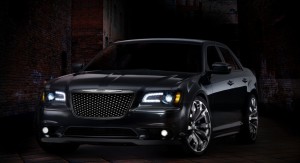
The long wheelbase made it feasible to carve out an exceptionally roomy cabin – especially in terms of back seat legroom, where the 300 is King of the Hill: 40.1 inches vs. 35 inches in the Genesis. Even the Impala – which is nearly three inches longer overall – has slightly less room in its second row (39.8 inches) than the large-living 300.
To be fair, both the Impala and the Avalon have more front seat legroom (45.8 inches and 42.1 inches, respectively). But the 300’s front-rear layout is more balanced, with comparable room in both rows. One area where the 300 is a little deficient relative to some of its rivals is headroom. There’s 1.3 inches less of it in the front row than in the Impala (38.6 inches for the Chrysler vs. 39.9 for the Impala) . . . and 2.5 inches less than in the Hyundai Genesis (at 41.1 inches, the headroom leader of the bunch). On the other hand, the 300 edges out the Avalon, which has only 37.6 inches of headroom up front.
All of these cars are roomy, but one may fit your particular body type better than the others. I can give you figures to compare, but only sitting in each of them will give you the true skinny.
One downside of the 300’s long wheelbase and large-living passenger cabin is the somewhat truncated trunk: 16.3 cubic feet isn’t small – but it’s not very big, either. Same tsk tsk as far as the Avalon, which only has a 16 cuber. Even more so the Genesis, whose 15.3 cubic foot trunk is smaller than many mid-sized cars’ trunks.
The Impala’s 18.8 cubic foot trunk is more appropriately full-sized.
Beyond its physical charms as a big car, the 300 is also a really nice car. It is several cuts above the now-retired Ford Crown Vic – which also offered the RWD/big car layout and available V-8 power at an affordable price – but in a taxi/cop car wrapper.
For instance, even base trim 300s come with heated leather seats, an 8.4 inch LCD touchscreen display, automatic climate control, Bluetooth wireless integration and 17 inch wheels.
The mid-trim S adds 20 inch wheels, a more powerful version of the V-6 (the V-8’s optional), paddle shifters (and driver selectable Sport settings) for the transmission and a booming 10 speaker Beats by Dre sound system.
Amenities such as heated and cooled cupholders, a heated steering wheel, heated rear seats, power rear sunshade, power adjustable pedals and LED cabin lighting come with the C.
At the pinnacle is the John Varvatos designer edition, which adds platinum or titanium chrome trim, hand-sanded wood inserts, special upholstery and badging – along with everything that already comes standard in the C.
Both the Hemi and AWD may be ordered as options.
The one they sent me this time was an S with AWD that had the optional Luxury Group (heated steering wheel, power sunshade, power tilt wheel/adjustable pedals, etc.) the panorama full-length sunroof, premium audio and integrated Garmin GPS with “line of sight” and topographical as-you-drive display, Adaptive Cruise Control, Blind Spot Warning System. Rain-sensing wipers, Collision Warning – and the sticker just barely crested $47k.
Stack that up, feature for feature (and size for size) against say a Benz E-Class or BMW 5. The fact is the base model 300 – just over $30k – compares favorably with the base trim Benz E and BMW 5. And the base price of those two is close to $50k. 
The big question is – what happens in 2015?
The 300 – in particular, the Hemi-equipped 300 – was viable as a mass-production car pre-2008, when gas was under $2 and Average Joes could afford to buy a two-ton RWD sedan with a 5.7 liter V-8 under the hood. But now? Consider the fact that even luxury-brands are scaling back on big engines. The BMW 5 now comes standard with a four.
If people shopping cars in the $45k and up class can’t afford V-8s – or just don’t want them anymore – how much longer will Chrysler be able to offer them?
Here’s to hoping that Chrysler figures out a way to keep the 300’s gonads in the sack.
THE BOTTOM LINE
Like James Galdofini’s Tony Soprano, the 300 is tough – but hard not to love.
Let’s pray the car doesn’t go the way of the actor.
Throw it in the Woods?
PS: We depend on you to keep the wheels turning. If you value alternatives to the MSM, please support independent media. Our donate button is here.
For those not Pay Pal-inclined, you can mail us at the following:
EPautos
721 Hummingbird Lane SE
Copper Hill, VA 24079


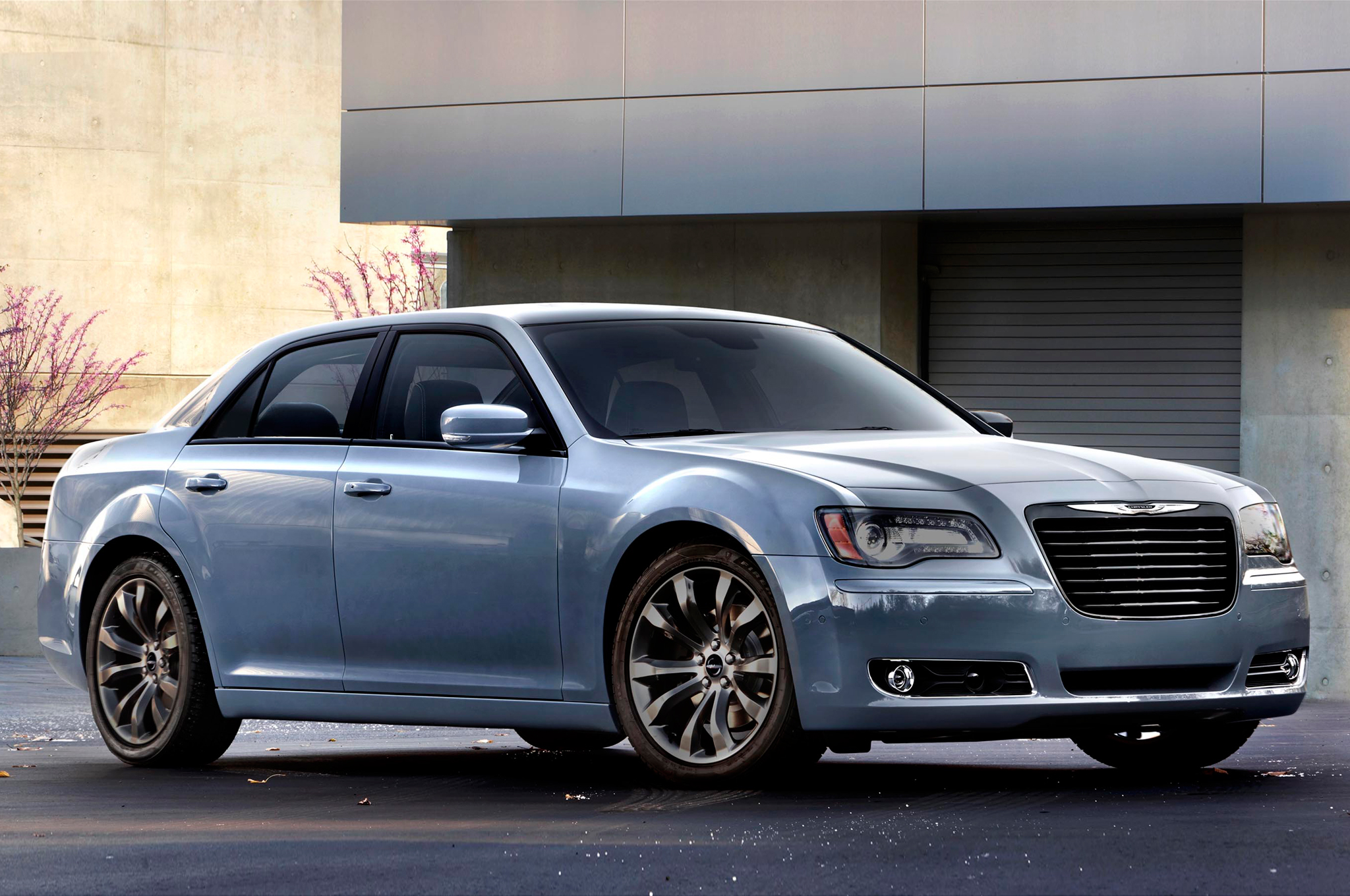


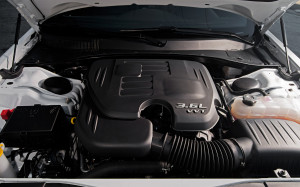


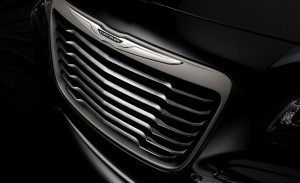

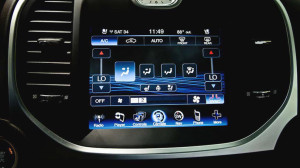






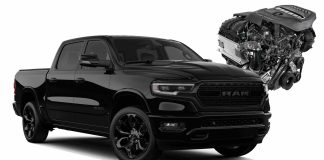
Of course there’s also the Breaking Bad connection.
I’m sure I’m not alone in noting how apropos it was for the New Improved Walter White to ditch the Aztek and get the Chrysler 300.
http://jalopnik.com/5932457/how-chrysler-is-using-a-meth-cooking-murderer-to-sell-cars
Morning, Bevin!
I should have mentioned the Breaking Bad connection. The car reflected Walter White’s menacing new persona; his serious persona. Of a piece with his shaved head and beard.
Did you ever see The Car with James Brolin?
Dear Eric,
“Did you ever see The Car with James Brolin?”
I might have. If I did, it was probably back in the 70s, when it was made.
Re: Chrysler 300. Apparently many ghetto drug dealers like the model too. It’s one of those instances where different demographics overlap and like the same thing. Blue jeans for example. Liked by rednecks and hippies alike. Transcends social class.
Some car buffs, such as myself, and I’m sure you yourself, like the new incarnation of the Chrysler 300 partly out of nostalgia for the original 1955-1965 Chrysler 300 letter series. Now those were something!
http://en.wikipedia.org/wiki/Chrysler_300_letter_series
Excerpt:
The 300 originally stood for the 300 hp (220 kW) engine. The C-300 was really a racecar aimed at the NASCAR circuits that was sold for the road for homologation purposes, with Chrysler’s most powerful engine, the 331 cu in (5.4 L) FirePower “Hemi” V8… By 1956 this would be the first American production car to top 355 hp (265 kW), and the letter series was for many years the most powerful car produced in the United States.
Eric, I have a question for you about AWD. In this, and many other articles, you seem to refer to the availability of AWD “like it’s a Good Thing.” And I’m sure it is…if the road surfaces you drive on are often wet, snowy or frozen.
But we all know that AWD provides little if any, real advantage on a serious “off road” environment.
So here’s the question. We know that some AWD systems, like Audi’s Quattro, or Acura’s SH-AWD are designed to dramatically improve on road handling. But most of the other AWD systems offered on passenger cars don’t really do that, do they?
Hi Mike,
The systems we’re talking about are (for the most part) designed to enhance on-pavement traction in wet/wintry conditions. In an otherwise rear-wheel-drive car like the 300, the AWD can make an otherwise-iffy vehicle snow-day viable.
Or at least, it’s better in the snow (and wet) than with just RWD.
In FWD cars, the real-world advantage is – in my opinion – more questionable. Because a FWD car – with decent tires and a decent driver – can handle light snow pretty well. And if the snow’s heavy – and unplowed – ground clearance becomes the big factor.
There are a few cars that have AWD systems designed to improve dry-road handling. Acura’s and Subaru’s, for example.
But the chief limiting factor in all these cars as far as off-pavement capability is – once again – ground clearance.
Usually, the lack of it.
I took a quick glance at a John Varvatos edition when I was test driving Jeeps. Very nice, indeed.
But the thought of paying $50k (it had lots of options on it) for a Chrysler just didn’t sit well.